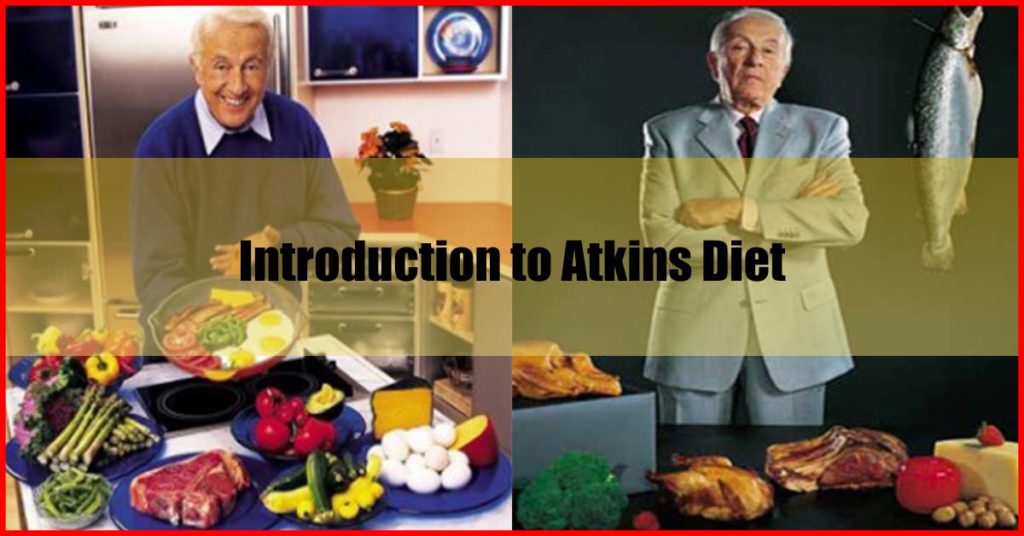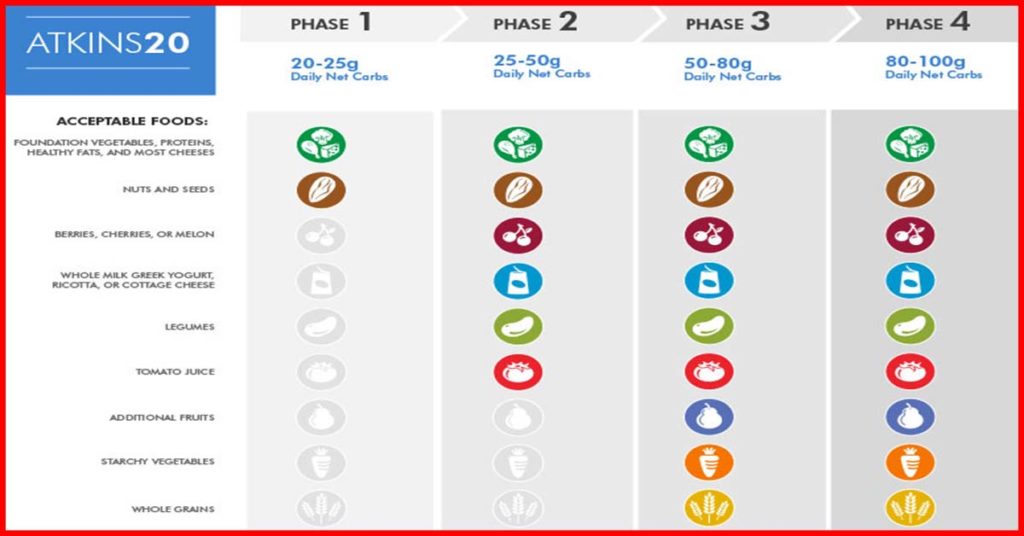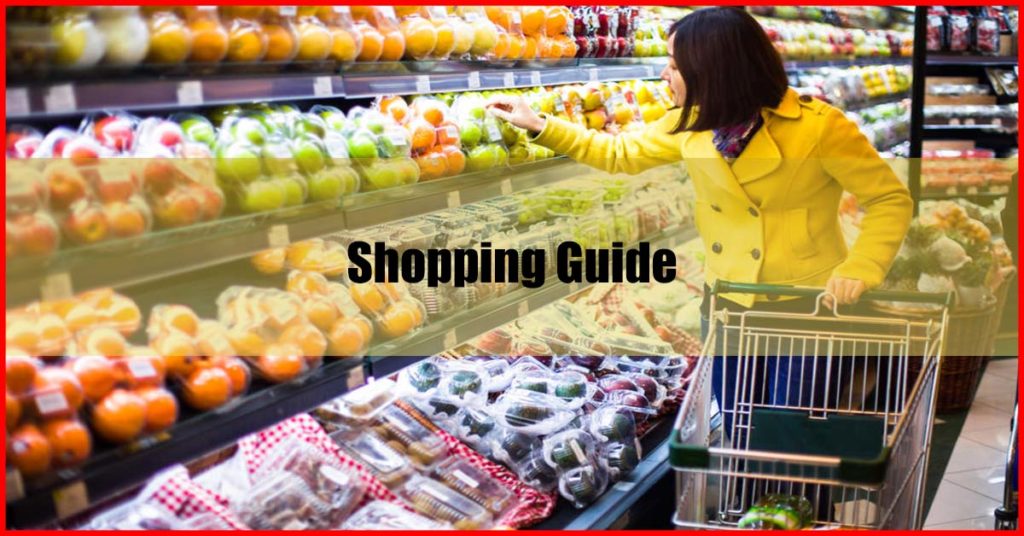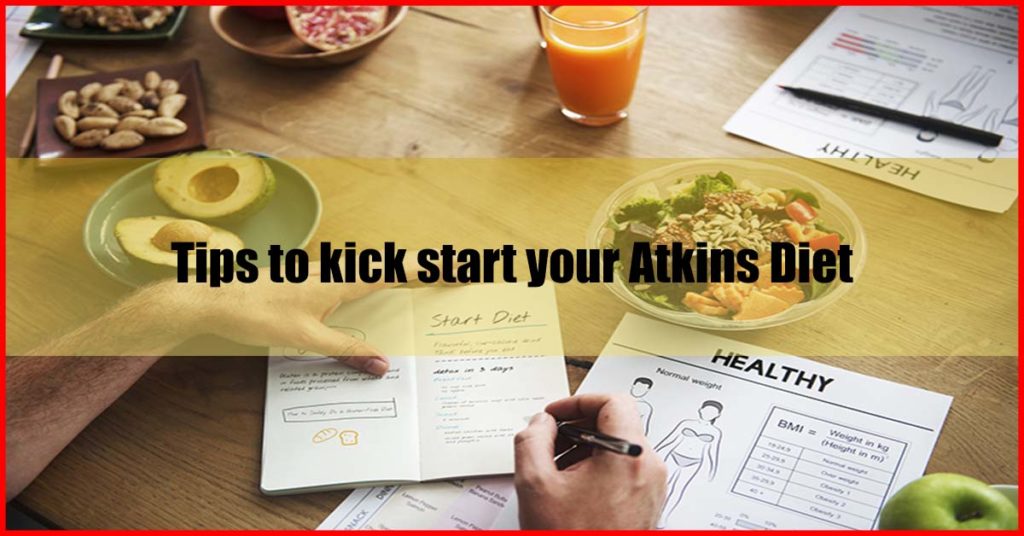Many fans of AuntieReviews recently asked our team to research and write some related low-carb diet topics, such as Atkins Diet (Bahasa Melayu namely Diet Atkins) for beginners, Keto Diet for beginners, and etc… So, today’s topic will cover the Atkins Diet Malaysia – The Road to Weight Loss.
Obesity is a health problem in Malaysia

Malaysia is known for being a melting pot of many cultures. As a multiracial and multi-ethnic country, that also means Malaysians have a variety of food choices! Although our Nasi Lemak, Roti Canai and Teh Tarik are yummy to the tummy, but these cuisines are certainly contributing to our nation’s obesity rates. According to the National Health and Morbidity Survey 2019, a shocking 50% of the adult population are either overweight or obese. Similarly, we are at the top of the ASEAN countries with 15.6% of the nation being obese.
What is obesity?
Obesity is defined as having a Body Mass Index (BMI) of > 30kg/m2. Although an increased BMI does not mean there is an increased risk of health complications, but it has been used as one of the major health indicators to decide for various weight loss treatments.
Obesity is a chronic disease. The world has seen an increase in obesity in developed and developing countries like Malaysia. It is estimated that a burden of USD 2 trillion healthcare cost being utilised for the disease, and it is projected to be even higher in the future.
What are the complications of obesity?
Did you know that obesity is a disease that affects many organs in the body? Obesity is one of the major risk factors for many non-communicable diseases and comorbidities. One of the leading causes of death in Malaysia is heart disease. There is also a large portion of the Malaysian population diagnosed with diabetes, high blood pressure and high blood cholesterol.
Research has shown that weight loss is able to improve health. Therefore, modest weight loss is able to prevent the progression of these diseases. For example, weight loss prevents Type 2 diabetes in prediabetic individuals, improves non-alcoholic fatty liver disease, reduces cholesterol levels, high blood pressure and even risk of getting heart diseases.
Introduction to Atkins Diet

In 1963, cardiologist Dr Robert C. Atkins decided to do some research on nutrition after being worried about the prescribing of medications to suppress hunger. He found studies regarding carbohydrate restriction as opposed to the commonly known calorie restriction and experimented on a low-carb diet. Post years of research, Dr Atkins published his first book regarding the findings on low-carbohydrate diet plans. Decades upon decades of research and experimenting led to many updated versions of the Atkins diet we see today!
The Atkins Diet (Bahasa Melayu namely Diet Atkins) focuses on restricting carbohydrate intake while emphasizing on proteins and fats. Nevertheless, it is not a high-protein diet. Individuals following the Atkins Diet are not required to count daily calories and there is no need to avoid excess fat in meals. It is only required to optimally control carbohydrates which include sugar and grains. The Atkins Diet aids to burn off body fat stores and helps to regulate blood sugar to stable levels all the while not causing hunger, thus effectively losing weight.
The main point of the Atkins Diet Malaysia – removing the carbohydrates
The main idea of the Atkins Diet is to restrict carbohydrates, especially in the first phase to kick start fat burning.
Here are some foods that one should avoid in the Atkins Diet:
- Simple sugars: sugary soft drinks, ice cream, cakes, candy, fruit juices, sugared drinks, bread, potatoes, chips, junk food, boba milk tea etc.
- Grains: rice, barley, pasta etc.
- Trans fats: processed canned foods
Example of foods that individuals should eat:
- Meats: chicken, beef, lamb, pork
- Seafood: salmon, sardine, trout
- Healthy fats: coconut oil, olive oil, avocados
- Nuts and seeds: almond nuts, walnuts, sunflower seeds
- Eggs
- Low carbohydrate vegetables: spinach, broccoli, kailan
- Full-fat dairy products: butter, cream, cheese
Atkins Diet Phases

The original Atkins Diet has been renamed to Atkins 20. This diet plan is meant for those who want to lose weight quickly. Especially for those who are obese and need to shed the extra pounds, the Atkins 20 is just for you.
The Atkins Diet consists of four different phases named: Induction, Ongoing Weight Loss, Pre-maintenance, and Lifetime maintenance.
*Note: one serving = 113 – 170 grams (4-6 ounces)
[Net carbohydrates = Total Carbohydrates – Dietary Fiber – Sugar alcohol]
PHASE 1: INDUCTION
This phase usually lasts about two weeks or longer. The induction phase is where the diet changes help the body switch from carbohydrate to fat burning. The process is also called ketosis. Individuals will notice quick weight loss.
- Carbohydrate restriction at net 20 grams per day
- Carbohydrates should come from leafy vegetables in the first two weeks.
- Level 1: Foundation vegetables: leafy greens and other low-carbohydrate vegetables
- 3 servings of protein per day
- Examples: chicken, fish, beef, pork etc.
- 3 servings of healthy fats per day
- Examples of healthy fats: butter, olive oil, salad dressings
- Level 2: Dairy foods high in fat and low in carbs: cream, sour cream, and most hard cheeses
PHASE 2: ONGOING WEIGHT LOSS
In the ‘ongoing weight loss’ phase, carbohydrates are introduced back into the daily meals slowly. Each week, 5 grams of carbohydrates are added. In this phase, individuals on the Atkins Diet can note down what type of carbohydrates help to gain or lose weight. As carbohydrates intake increases, weight loss gradually slows down in this period.
- Add on net 5 grams of carbohydrates to the current diet.
- Gradual increments of additional carbohydrates at 5 grams every week should be progressive and slow. Nevertheless, it is recommended to increase every two weeks for better weight loss outcomes.
- Start with lower carbohydrate foods to higher carbohydrates foods.
- Level 3: Nuts and seeds (but not chestnuts)
- Level 4: Berries, cherries, and melon (but not watermelon)
- Level 5: Whole milk yoghurt and fresh cheeses, such as cottage cheese and ricotta
- Level 6: Legumes, including chickpeas, lentils, and the like.
- Level 7: Tomato and vegetable juice “cocktail” (plus more lemon and lime juice)
- You can use the diagram above for the Atkins Carb Ladder as a reference.
PHASE 3: PRE-MAINTENANCE
Moving on to the pre-maintenance phase, dieters stop losing weight as the level of carbohydrate intake increases over time. In this phase, individuals will be able to know the number of carbohydrates that their body requires and able to tolerate to prevent sudden weight gain and avoid changes in eating habits.
- Progressively add in 5 grams of carbohydrates weekly until weight stabilizes.
- Be sure to continue with the servings of protein and healthy fats as with Phase 1.
- Add in higher carbohydrate foods:
- Level 8: Other fruits (but not fruit juices or dried fruits)
- Level 9: Higher-carb vegetables, such as winter squash, carrots, and peas
- Level 10: Whole grains
- This phase allows individuals to experiment with the different carbohydrates reintroduced to their diet.
- This is the phase to properly count the total carbohydrate intake per day.
- Try adding more variety to the range of foods but not increasing the amount.
- Add only one new food each day to identify foods that awaken cravings.
- Keep with your foundation veggies that consist of about 15 grams daily while adding additional carbohydrates from other categories.
- Write down foods that help in maintaining weight, and also those that will cause weight gain and cravings.
PHASE 4: LIFETIME MAINTENANCE
Individuals achieved their weight loss goal and have already discovered the highest level of carbs that can be taken on a daily basis. This discovery will help individuals in maintaining their weight.
Perhaps you may think that the original Atkins Diet is too strict and hard to follow. No worries, we have you covered! Over the years of research, there have been modified versions of the Atkins Diet to cater to flexibility. These modified Atkins Diet not only help you to lose weight but are super easy to follow!
Atkins 40 Diet (Modified Atkins Diet)
The Atkins 40 Diet is meant for those who have less than 40 pounds to lose (about 18kg). It is definitely a more flexible diet to lose weight effectively! Individuals can only eat 40 grams of net carbohydrates per day. Atkins 40 would be suitable for you as you can choose a wide variety of foods.
PHASE 1: INDUCTION
- Atkins 40 start off with a net 40 grams of carbohydrates in a day.
- You can divide 10 grams for the three main meals of the day, 5 grams for two snacks per day.
- The carbohydrates can be from all food groups in the Atkins Carb Ladder.
- Take 1/3 of carbohydrates from vegetables, the remaining 2/3 from fruits, nuts, whole grains.
- 3 servings of protein per day
- Examples: chicken, fish, beef, pork etc.
- 3 servings of healthy fats per day
- Examples of healthy fats: butter, olive oil, salad dressings
- Examples of dairy foods that are high in fat but low in carbohydrates: hard cheeses, sour cream
PHASE 2: ONGOING WEIGHT LOSS
Phase 2 begins when one is about 4.5 kg (10 pounds) from the target goal weight.
- Individuals may start to add on 10 grams of additional net carbohydrates to the daily diet on a weekly basis.
PHASE 3 & 4: MAINTENANCE
When goal weight is achieved, start expanding the list of carbohydrates that are acceptable and tolerated in your meal plans!
- Remember to count your carbohydrates daily.
- Stay on track to maintain your goal weight!
Atkins 100 Diet
Atkins 100 is a diet plan that aims to help people maintain their current weight. It does not require an induction phase as it is a lifestyle approach.
- Atkins 100 starts with a net of 100 grams of carbohydrates per day.
- The carbohydrates can be from all food groups in the Atkins Carb Ladder.
- Take 1/5 of carbohydrates from vegetables, the remaining 4/5 from fruits, nuts, whole grains.
- 3 servings of protein per day
- Examples: chicken, fish, beef, pork etc.
- 3 servings of healthy fats per day
- Examples of healthy fats: butter, olive oil, salad dressings
- Examples of dairy foods that are high in fat but low in carbohydrates: hard cheeses, sour cream
What if I get hungry throughout the day?
The Atkins Diet is flexible. Of course, flexibility does not mean one should ignore the set carbohydrate counting in a day. There could be times where a certain food will cause unwanted cravings and desires. Let us face it, reintroducing foods back into a diet plan may not be a smooth process.
If you are feeling hungry in some instances between meals, you can have low carbohydrate snacks.
Examples of low carbohydrate snacks are:
- A hard-boiled egg
- A piece of cheese
- A handful of nuts
- Some Greek yoghurt
- Small portions of berries and cream
What if I am eating out?
Eating out is a common occurrence for many dieters due to a hectic lifestyle. There are times where one could not always meal-prep for each time of the day. The good news for you is that the Atkins Diet is very easy to follow even when eating out!
- When picking a set meal with side dishes, choose extra vegetables instead of chips, mash potatoes or rice.
- Order meals based on fatty proteins as the main course.
- For example: chicken chop, steak
- Pros: There is no need to cut off the sauces in your meal.
Shopping Guide

Dieting with Atkins will work well if one is able to prepare meals on their own. In that way, it is easier to track the number of carbohydrates that we can allocate in a meal. Moreover, fresh ingredients are high in micronutrients and macronutrients which contributes to balanced meals.
Perhaps you may be thinking, is there any guide when I do grocery shopping? Another thing to note is that it is not necessary to shop for organic foods. Take a look at this shopping guide below:
- Meats: Beef, chicken, lamb, pork, bacon
- Fatty fish: Salmon, trout, etc.
- Shrimp and shellfish
- Eggs
- Dairy: Greek yoghurt, heavy cream, butter, cheese
- Vegetables: Spinach, kale, lettuce, tomatoes, broccoli, cauliflower, asparagus, onions, etc.
- Berries: Blueberries, strawberries, etc.
- Nuts: Almonds, macadamia nuts, walnuts, hazelnuts, etc.
- Seeds: Sunflower seeds, pumpkin seeds, etc.
- Fruits: Apples, pears, oranges
- Coconut oil
- Olives
- Extra virgin olive oil
- Dark chocolate
- Avocados
- Condiments: Sea salt, pepper, turmeric, cinnamon, garlic, parsley, etc.
- Avoid processed food with added sugar and salt.
Tips to kick start your Atkins Diet

To ensure that your dieting plan is a successful one, you should follow some of these tips to have a great start in dieting.
- Highly recommended to clear out the pantry and fridge of all unhealthy foods and ingredients.
- Foods and ingredients that should be gone from your kitchen: ice cream, sodas, canned drinks, cereals, packaged juices, flour, sweetened creamer, bread, biscuits, junk food etc.
Are there any side effects and risks of the Atkins Diet?
Drastically cutting carbohydrates in the early stages of the Atkins Diet can result in some side effects which includes:
- Dizziness
- Headache
- Fatigue and weakness
- Constipation
- Nausea
This may be due to the fact that the body is transitioning into a ketosis state and there is a low level of sugar in the blood circulation which causes these side effects. Do not be worried about the possible side effects as once the body adjusts to the number of carbohydrates consumed in a day and fat burning starts, these will gradually resolve. Be sure to also take more vegetables that are high in fibre to avoid constipation. It is recommended to take some supplements to replace the lacking of vitamins and supplements from the diet.
Can a vegetarian/vegan do a Atkins Diet?
Vegetarians or vegans can follow the Atkins Diet Malaysia but the first phase should be skipped as the carbohydrates are being limited too much. Protein sources can be substituted as below:
Vegetarians can get protein from:
- Eggs
- Cheese
- Soy
- Nuts
- Seeds
- Legumes
- High-protein grains like quinoa
Vegans can get protein from:
- Legumes
- Soy
- Nuts
- Seeds
- High-protein grains like quinoa
How do I start the Atkins diet?
The Atkins Diet Malaysia is as easy as 1 2 3! Listed below is an example of how meals should look like in the first phase:
- Breakfast: Start the day with scrambled eggs with sauteed onions, butter, and cheese.
- Lunch:Chicken salad dressed with olive oil and avocados.
- Dinner:Salmon with vegetables, a handful of nuts.
- Snacks:A piece of dark chocolate, some Greek yoghurt
- Example of beverages allowed throughout the meal is: coffee, tea, water etc.
Do I need to exercise while on the Atkins Diet?
Even though the Atkins Diet does not say that exercise is compulsory but exercising regularly helps you to lose weight faster by shedding those extra pounds. If you are obese, many experts still recommend moderate exercises of 150 minutes a week.
Try the Atkins Diet today!

Weight loss is a conscious choice and is an ongoing process. With a lot of perseverance and self-control, the Atkins Diet is able to help you reach your weight goals easily. It is actually as easy as it seems without the need to restrict the portions of a meal.
Nonetheless, it is advisable to consult your doctors and dietician if the Atkins Diet works for you.
The Malaysian diet often consists of high sugar and carbohydrate contents which cause an increase in weight. If you are aiming to lose weight for a healthier lifestyle, the Atkins Diet will work well as it helps to remove excess sugar from your daily life. Start the Atkins Diet, start losing weight!
Frequently Asked Questions (FAQs)

What is Atkins Diet?
The Atkins Diet (Bahasa Melayu namely Diet Atkins) is a diet program that focuses on restricting carbohydrate intake while emphasizing on proteins and fat. It does not require calorie counting or cutting down meal sizes.
How much of net carbohydrates can I consume in a day?
During the first phase, you should only consume a net 20 grams of carbohydrates in a day. [Net carbohydrates = Total Carbohydrates – Dietary Fiber – Sugar alcohol]
You may progressively add on 5 grams of carbohydrates into the diet every week.
What if I feel hungry throughout the day while on the Atkins Diet?
You can consume some low carbohydrate snacks such as a hard-boiled egg, a piece of cheese, a handful of nuts, some Greek yoghurt etc.
Can I still eat out at restaurants with the Atkins Diet?
Yes, you can. Choose meals that are protein and fat-based. Do choose side dishes that are of low carbohydrates such as salads and leafy greens.
I’m on the Atkins Diet and I get attracted to all the junk food at home!
It requires much discipline and perseverance with the Atkins Diet. Clear out your pantry, fridge and cupboards of all the junk food before starting the Atkins Diet. You can also store some low carbohydrate, healthy snacks at home!

